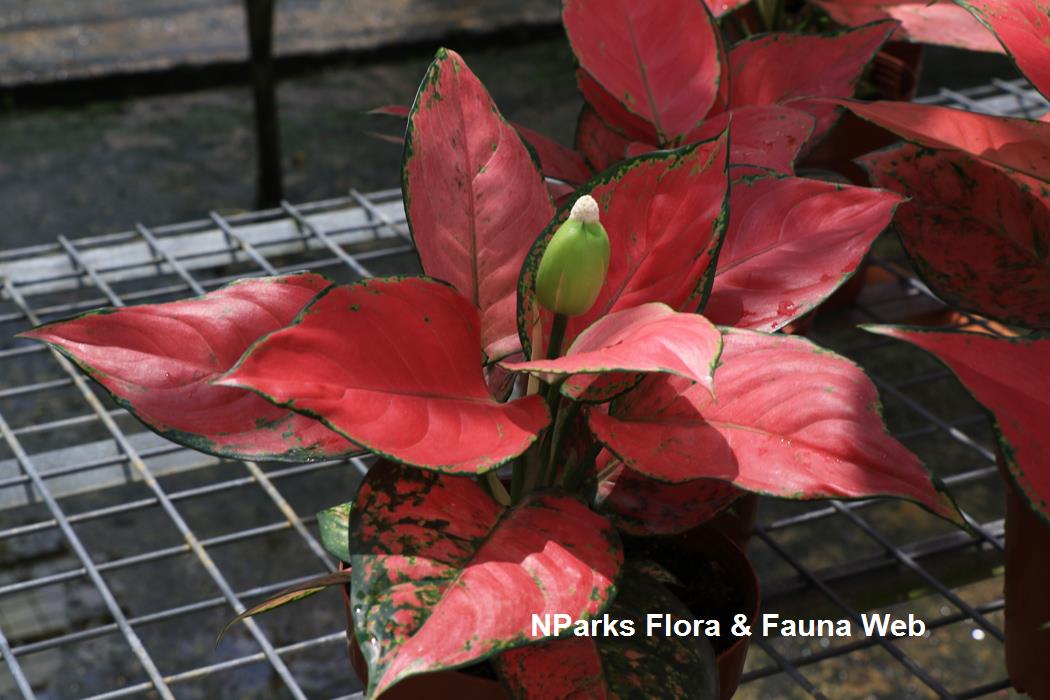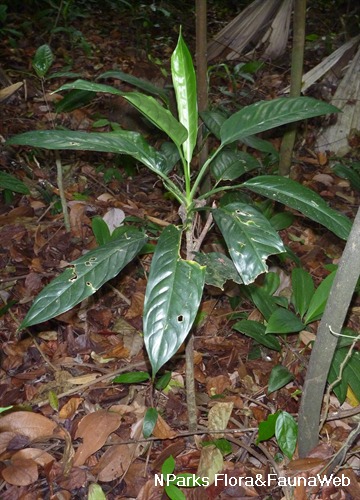
Name
Classifications and Characteristics
| Plant Division | Angiosperms (Flowering Seed Plants) (Monocotyledon) |
|---|---|
| Plant Growth Form | Herbaceous Plant |
| Lifespan (in Singapore) | Perennial |
| Maximum Height | 1.2 m |
Biogeography
| Preferred Climate Zone | Tropical |
|---|---|
| Local Conservation Status | Non-native (Horticultural / Cultivated Only) |
Description and Ethnobotany
| Growth Form | Herbaceous plant up to 1.2 m tall. |
|---|---|
| Foliage | Smooth leaves are narrowly triangular, gradually tapering to a long, soft tip. They are green to dark green with large, silvery splotches that are arranged in an alternating banded pattern. |
| Cultivation | This low maintenance plant is ideal as a houseplant or office plant. It tolerates low light conditions well, but may become leggy over time. It will be more compact and bushy under bright, diffuse light. |
Landscaping Features
| Desirable Plant Features | Ornamental Foliage |
|---|---|
| Landscape Uses | Interiorscape/ Indoor Plant, Container Planting |
| Thematic Landscaping | Silver Garden |
Plant Care and Propagation
| Light Preference | Semi-Shade, Full Shade |
|---|---|
| Water Preference | Moderate Water, Occasional Misting |
| Plant Growth Rate | Fast |
Foliar
| Foliage Retention | Evergreen |
|---|---|
| Mature Foliage Colour(s) | Green, Silver / Grey |
| Mature Foliage Texture(s) | Smooth |
| Foliar Type | Simple / Unifoliate |
| Foliar Attachment to Stem | Petiolate |
| Foliar Shape(s) | Non-Palm Foliage (Oblong) |
| Foliar Venation | Pinnate / Net |
| Foliar Margin | Entire |
| Foliar Apex - Tip | Acuminate |
| Foliar Base | Rounded / Obtuse |
| Leaf Area Index (LAI) for Green Plot Ratio | 3.5 (Shrub & Groundcover - Monocot) |
Image Repository
Others
| Master ID | 316 |
|---|---|
| Species ID | 1612 |
| Flora Disclaimer | The information in this website has been compiled from reliable sources, such as reference works on medicinal plants. It is not a substitute for medical advice or treatment and NParks does not purport to provide any medical advice. Readers should always consult his/her physician before using or consuming a plant for medicinal purposes. |





